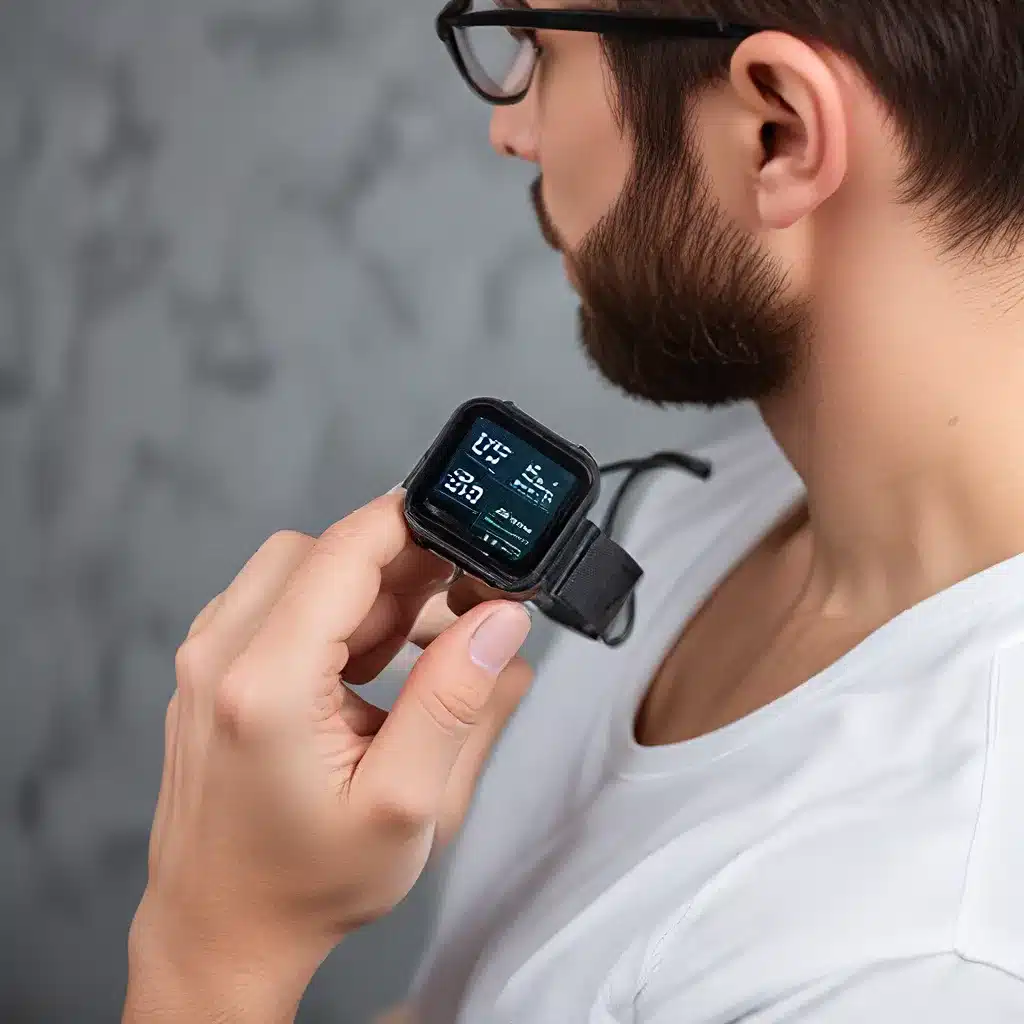
In the rapidly evolving world of sensor networks and Internet of Things (IoT), the accurate and reliable performance of sensors is crucial, especially in applications such as wearable IoT and mobile health (mHealth) devices. These technologies are increasingly being used to monitor various physiological parameters, from heart rate and blood pressure to physical activity and sleep patterns. However, ensuring the calibration and precision of these sensors is a significant challenge that must be addressed to maintain the integrity and trust in the data collected.
Understanding Sensor Calibration
Sensor calibration is the process of adjusting the output of a sensor to match the known value of a reference standard. This is essential to ensure that the sensor measurements accurately reflect the actual physical quantities being monitored. Inaccurate calibration can lead to systematic errors in the sensor data, which can have serious implications, particularly in healthcare and medical applications.
Sensor calibration techniques can be broadly classified into two categories: static calibration and dynamic calibration. Static calibration involves adjusting the sensor’s output based on a known set of input values, while dynamic calibration takes into account the sensor’s response to changing input conditions, such as temperature or pressure variations.
Importance of Sensor Calibration in Wearable IoT and mHealth
In the context of wearable IoT and mHealth devices, sensor calibration becomes even more critical due to the dynamic nature of the environments in which these sensors operate. Factors such as body movement, skin contact, and environmental conditions can all affect the sensor’s performance and lead to measurement errors.
Accurate sensor calibration is essential for reliable data collection and informed decision-making in these applications. For example, in wearable fitness trackers, inaccurate heart rate or step count measurements can lead to skewed fitness tracking and potentially misguided health recommendations. Similarly, in mHealth applications, such as remote patient monitoring, precise sensor calibration is crucial for early detection and effective management of chronic conditions.
Sensor Calibration Techniques
To address the challenges of sensor calibration in wearable IoT and mHealth, researchers and engineers have developed a range of calibration techniques. These techniques aim to improve sensor accuracy and reliability while accounting for the unique challenges posed by these dynamic and often resource-constrained environments.
Static Calibration Techniques
Static calibration methods involve adjusting the sensor’s output based on a known set of input values. This can be achieved through mathematical models, lookup tables, or sensor fusion techniques.
Mathematical models: These involve deriving mathematical equations that describe the relationship between the sensor’s output and the actual physical quantity being measured. By adjusting the model parameters, the sensor’s output can be calibrated to match the reference standard.
Lookup tables: In this approach, the sensor’s output is mapped to a corresponding reference value in a pre-determined lookup table. This method is particularly useful when the relationship between the sensor’s output and the physical quantity is non-linear or complex.
Sensor fusion: This technique combines multiple sensors to improve the overall measurement accuracy. By leveraging the complementary strengths of different sensors, the system can compensate for individual sensor inaccuracies and provide a more reliable and precise output.
Dynamic Calibration Techniques
Dynamic calibration methods aim to account for the changing environmental conditions that can affect sensor performance over time. These techniques often involve real-time adjustments to the sensor’s calibration parameters based on feedback from additional sensors or machine learning algorithms.
Adaptive filtering: This approach uses digital signal processing techniques, such as Kalman filters or Bayesian filters, to continuously adapt the sensor’s calibration based on the observed input-output relationship and environmental factors.
Self-calibration: In this method, the sensor periodically recalibrates itself by comparing its output to a known reference or secondary sensor. This helps to compensate for drift or changes in sensor characteristics over time.
Machine learning-based calibration: Machine learning algorithms, such as neural networks or support vector machines, can be trained to learn the relationship between the sensor’s output and the true physical quantity. This allows for dynamic, real-time calibration that can adapt to changing environmental conditions.
Security and Privacy Considerations
Alongside the technical aspects of sensor calibration, the security and privacy of the data collected by wearable IoT and mHealth devices is also a critical concern. Proper security measures, such as data encryption, secure communication protocols, and user authentication, must be implemented to protect sensitive health information and maintain user trust.
Secure sensor calibration techniques are also essential to prevent malicious tampering or data manipulation, which could lead to erroneous measurements and potentially harmful medical decisions. This includes secure firmware updates, hardware-based root of trust, and end-to-end data integrity checks.
Energy Management Considerations
In the context of wearable IoT and mHealth devices, energy management is another crucial aspect to consider. These devices often have limited battery life and must operate in resource-constrained environments. Sensor calibration techniques that optimize energy consumption can help extend the device’s lifespan and ensure continuous, reliable monitoring.
Strategies such as adaptive sampling rates, duty cycling, and energy-efficient sensor fusion can be employed to balance the trade-off between sensor accuracy, reliability, and power consumption. Additionally, energy harvesting technologies and power-aware sensor calibration algorithms can further contribute to improving the energy efficiency of these devices.
Conclusion
In the rapidly evolving world of sensor networks and IoT, the accurate and reliable performance of sensors is crucial, especially in wearable IoT and mHealth applications. Sensor calibration techniques play a vital role in ensuring the integrity and trust of the data collected by these devices, which is essential for informed decision-making and effective healthcare monitoring.
By understanding the various static and dynamic calibration methods, as well as the security and energy management considerations, developers and researchers can enhance the accuracy and reliability of sensor networks and IoT-based applications, ultimately improving the quality of life for users and patients.
As the sensor networks and IoT ecosystem continues to expand, the importance of sensor calibration will only grow, driving further advancements in this critical field of study.